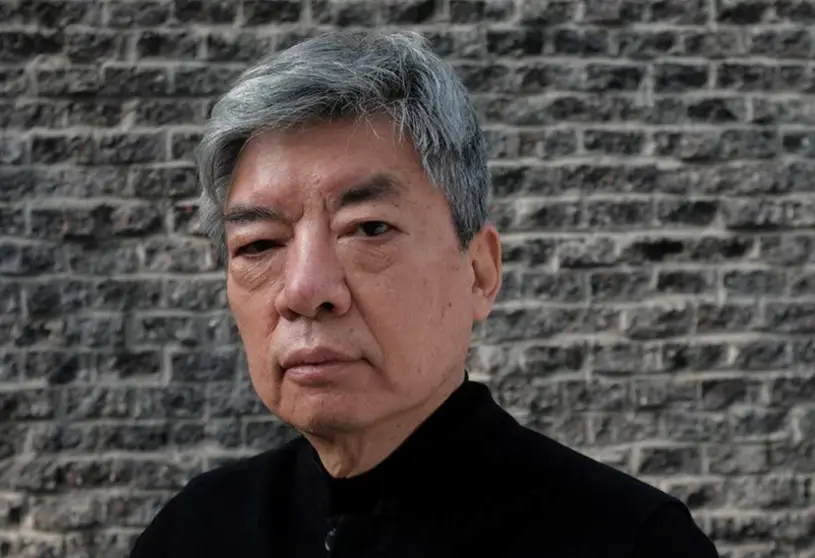The Pritzker Architecture Prize announces Liu Jiakun, of Chengdu, People’s Republic of China, as the 2025 Laureate of the Pritzker Architecture Prize, the award that is regarded internationally as architecture’s highest honor.
“Architecture should reveal something—it should abstract, distill and make visible the inherent qualities of local people. It has the power to shape human behavior and create atmospheres, offering a sense of serenity and poetry, evoking compassion and mercy, and cultivating a sense of shared community,” expresses Liu.


“Through an outstanding body of work of deep coherence and constant quality, Liu Jiakun imagines and constructs new worlds, free from any aesthetic or stylistic constraint . Instead of a style, he has developed a strategy that never relies on a recurring method but rather on evaluating the specific characteristics and requirements of each project differently . That is to say, Liu Jiakun takes present realities and handles them to the point of offering sometimes a whole new scenario of daily life. Beyond knowledge and techniques, common sense and wisdom are the most powerful tools he adds to the designer’s toolbox,” states the 2025 Jury Citation, in part.




Liu creates public areas in populated cities where the luxury of space is largely absent, forging a positive relationship between density and open space . By multiplying typologies within one project, he innovates the role of civic spaces to support the breadth of requisites for a diverse society . West Village (Chengdu, China, 2015) is a five-story project that spans an entire block, visually and contextually contrasting with the matrix of characteristically mid- and high-rise buildings . An open yet enclosed perimeter of sloping pathways for cyclists and pedestrians envelopes its own vibrant city of cultural, athletic, recreational, office and business activities within, while allowing the public to view through to the surrounding natural and built environments . Sichuan Fine Arts Institute Department of Sculpture (Chongqing, China, 2004) displays an alternate solution to maximizing space, with upper levels protruding outward to extend the square footage of a narrow footprint.




Throughout his works, Liu demonstrates a reverence for culture, history and nature, chronicling time and comforting users with familiarity through modern interpretations of classic Chinese architecture. Flat eaves of the Suzhou Museum of Imperial Kiln Brick (Suzhou, China, 2016) and window walls of Lancui Pavilion of Egret Gulf Wetland (Chengdu, China 2013) reimagine the form of pavilions dating back many millennia. Tiered balconies of Novartis (Shanghai) Block – C6 (Shanghai, China, 2014) are reminiscent of towers representing many dynasties.


“Liu Jiakun uplifts through the process and purpose of architecture, fostering emotional connections that unite communities,” remarks Tom Pritzker, Chairman of The Hyatt Foundation, which sponsors the award . “There is a wisdom in his architecture, philosophically looking beyond the surface to reveal that history, materials and nature are symbiotic .”




Liu’s career spans over four decades, with more than thirty projects ranging from academic and cultural institutions to civic spaces, commercial buildings and urban planning throughout China . Significant works also include Museum of Clocks, Jianchuan Museum Cluster (Chengdu, China, 2007); Design Department on new campus, Sichuan Fine Arts Institute (Chongqing, China 2006), Lodging Center of China International Practice Exhibition of Architecture (Nanjing, China, 2012), Chengdu High-Tech Zone Tianfu Software Park Communication Center (Chengdu, China, 2010), and Songyang Culture Neighborhood (Lishui, China, 2020).


Liu is the 54th Laureate of the Pritzker Architecture Prize and the founder of Jiakun Architecture, established in 1999. Born in Chengdu, China, he resides and works in his native city. He will be honored at a celebration in Abu Dhabi, United Arab Emirates this spring, and globally with a virtual ceremony video this fall . The 2025 Laureate Lecture and Panel Discussion will be held in May and open to the public in-person and online.
This article has been published with the Pritzker website media kit for the announcement of the 2025 Pritzker Architecture Prize.
Source >> HERE
Save


